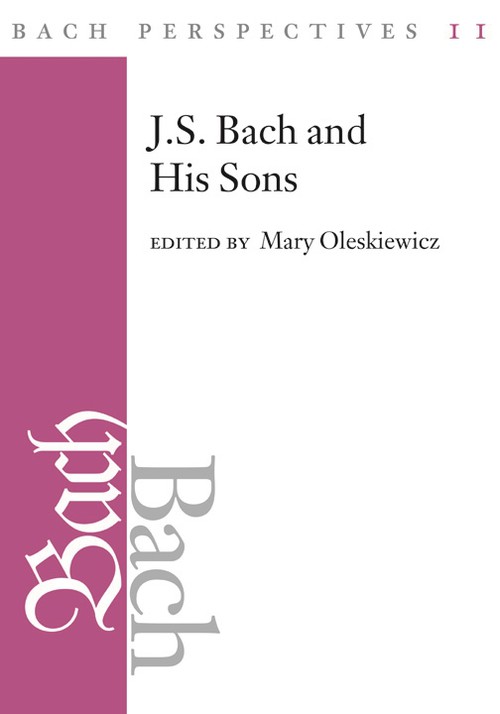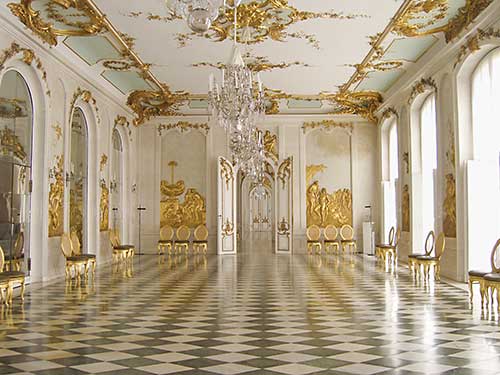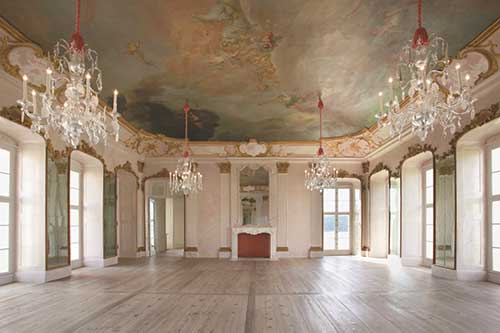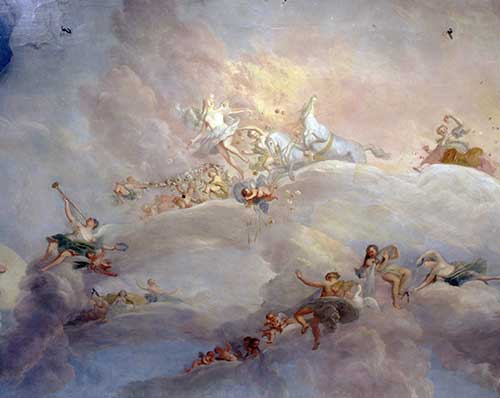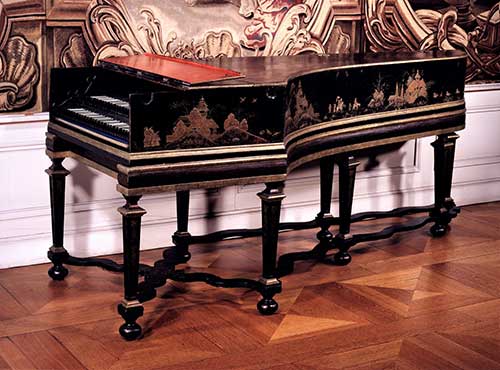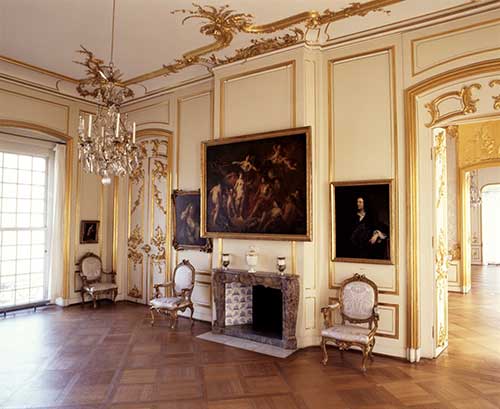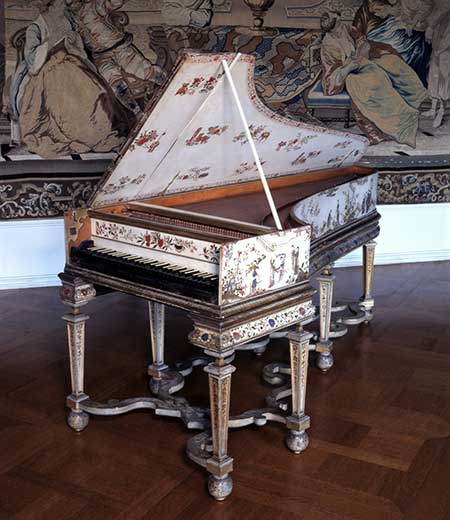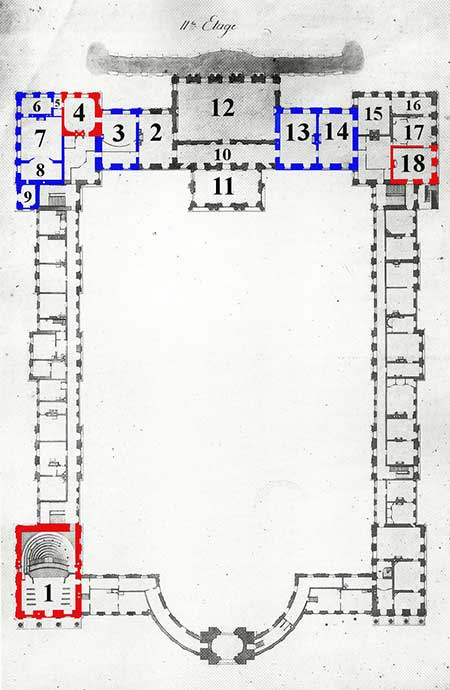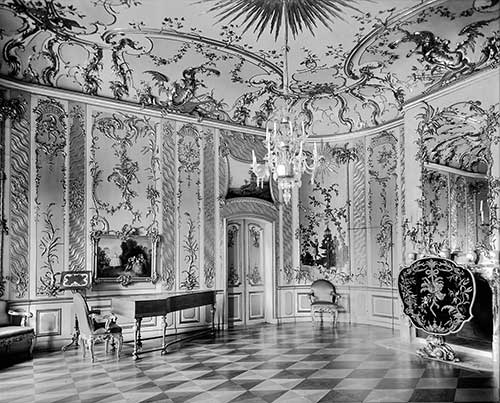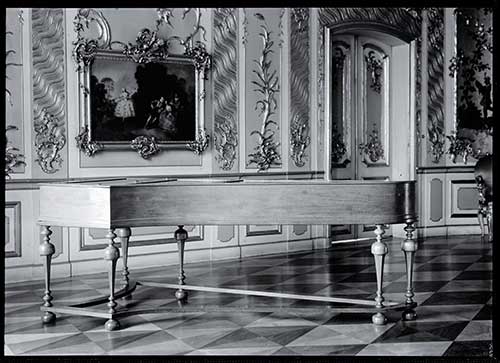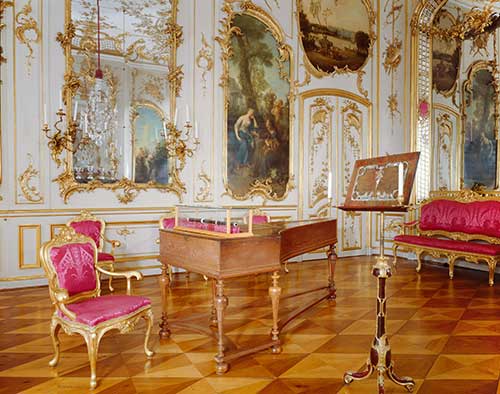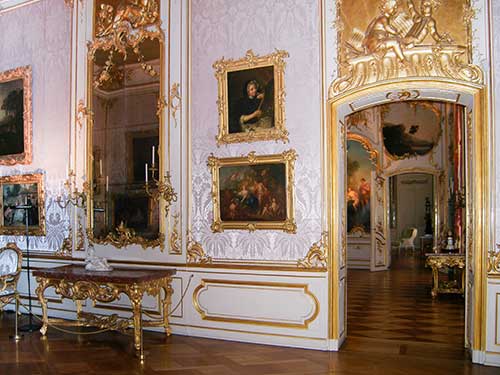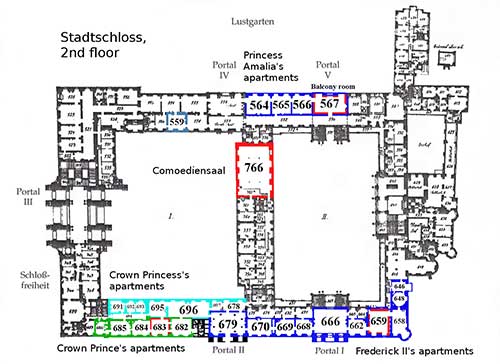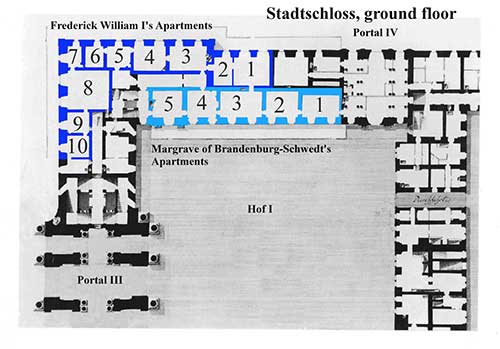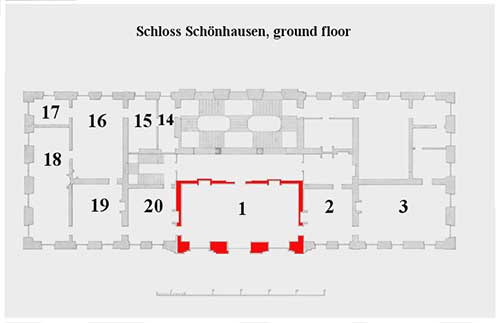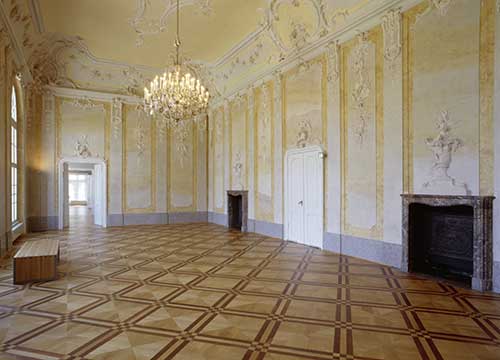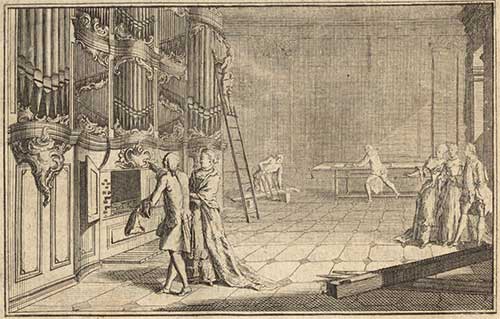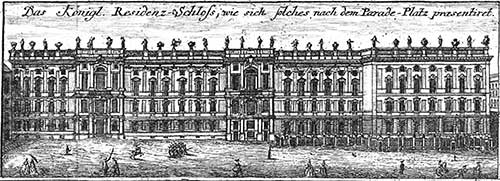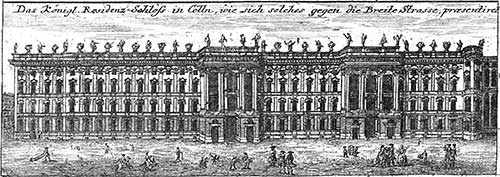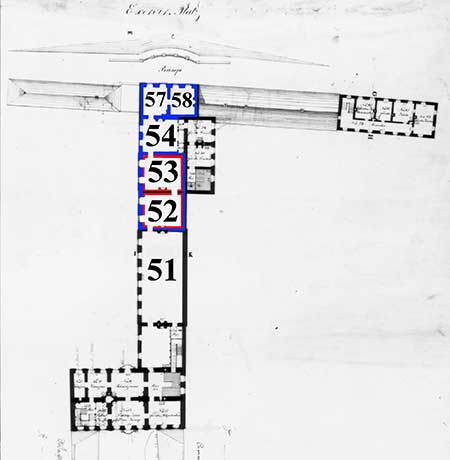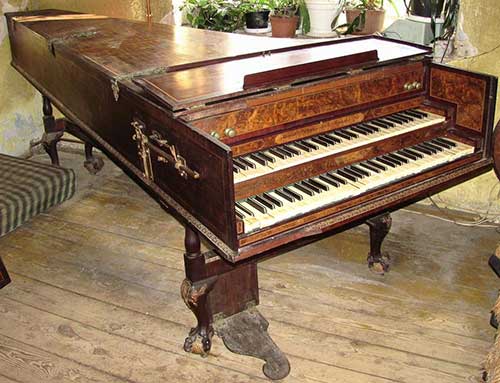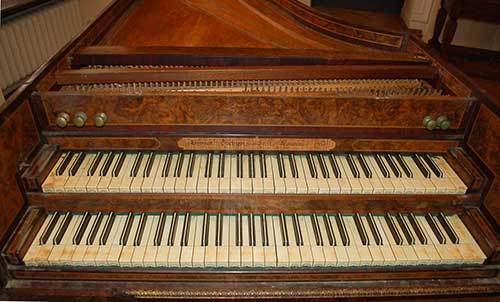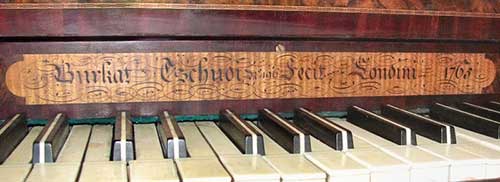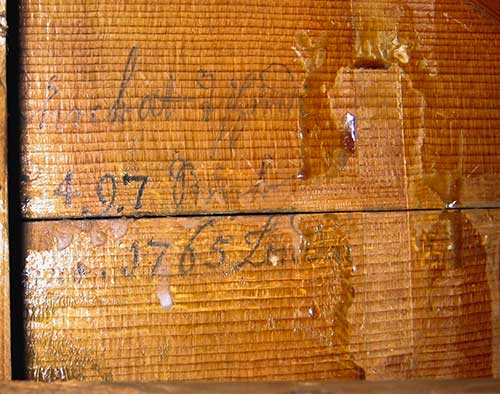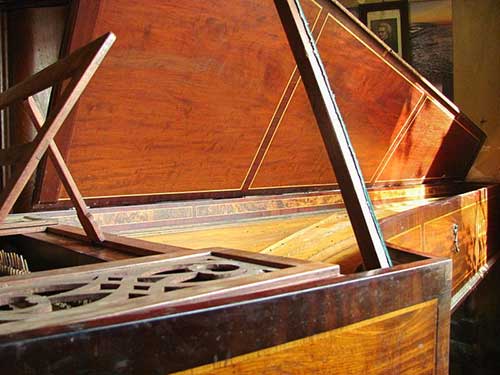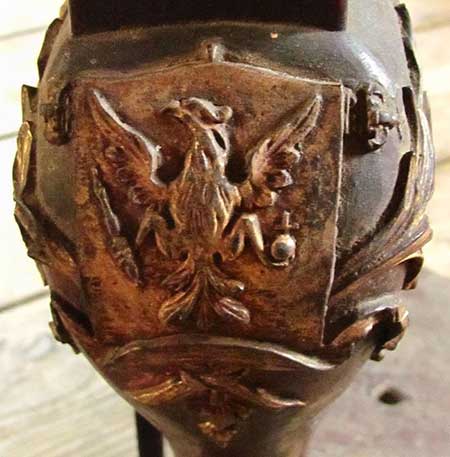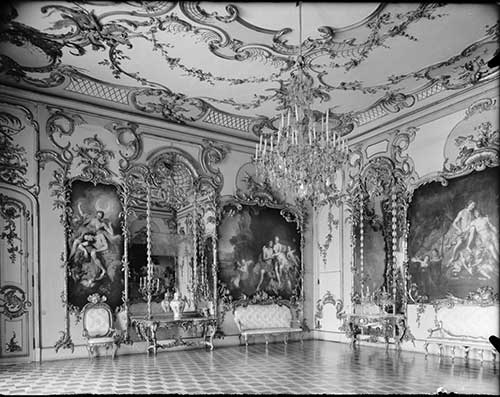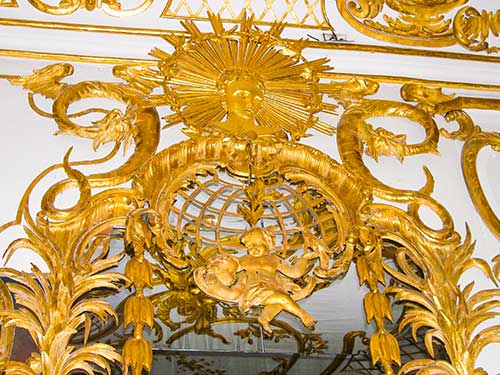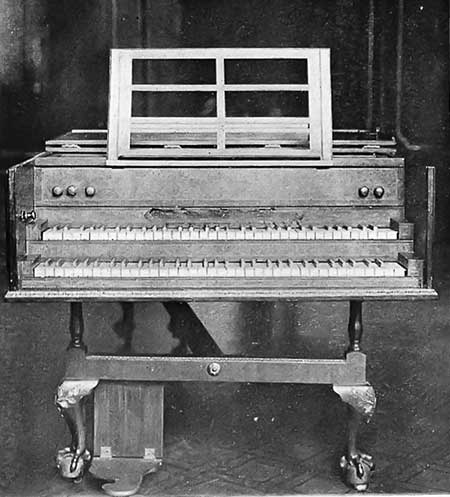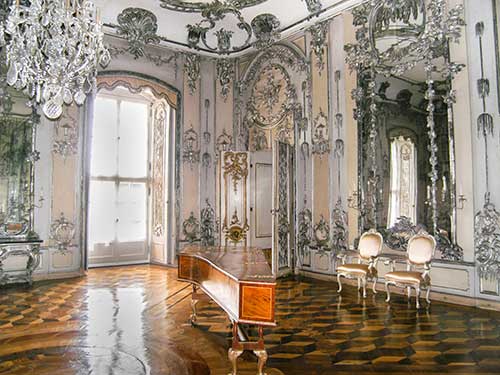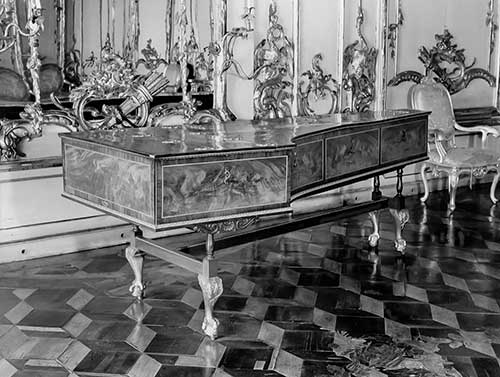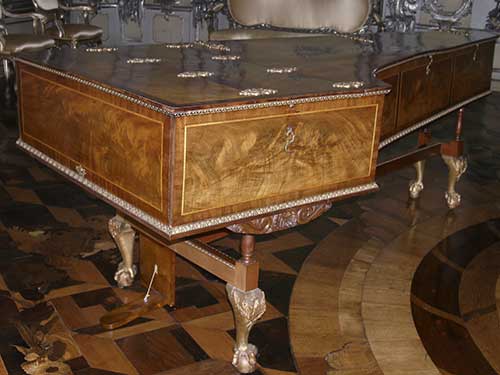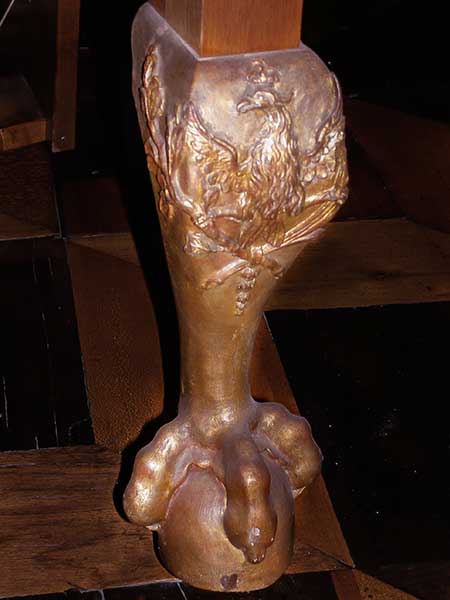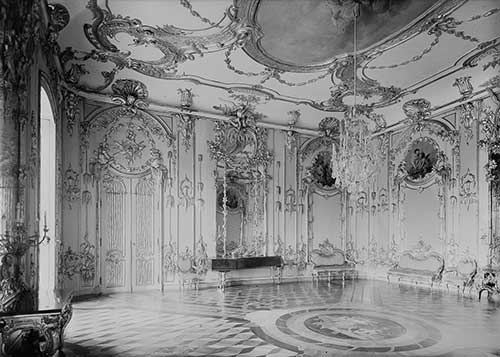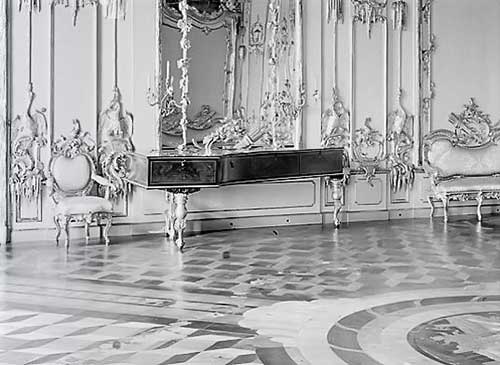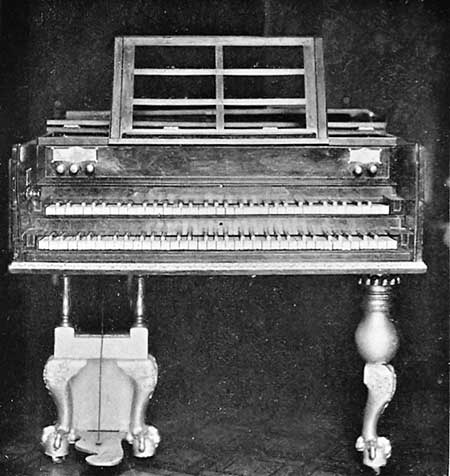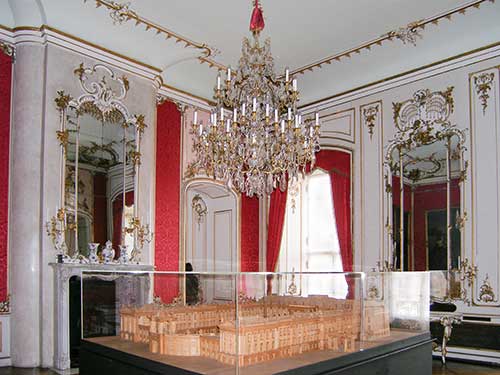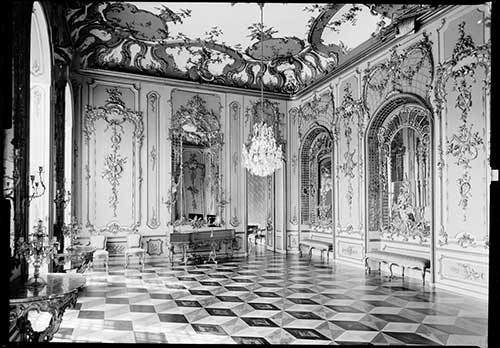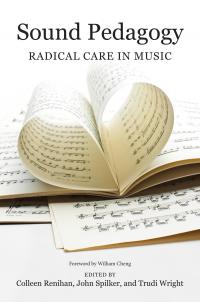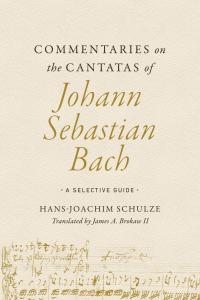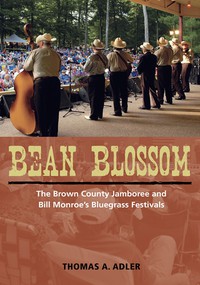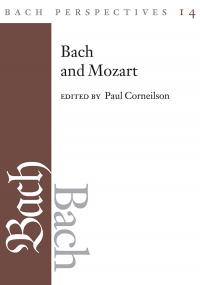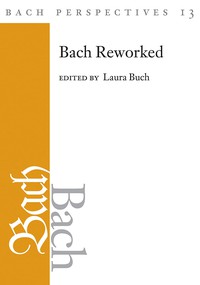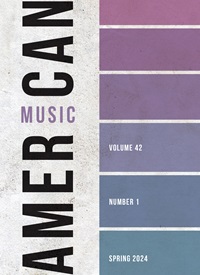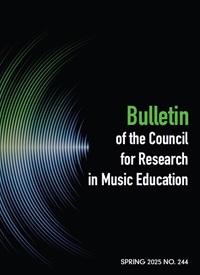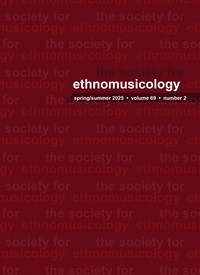4.1 (pp. 38–41): Potsdam Stadtschloss, 2nd floor. Floor plan, Heinrich Conrad Manger Jr. and Friedrich Ludwig Carl Krüger, before 1800. The room numbers follow Nicolai (1786); they may differ from those cited in palace inventories. As noted in 1.2, the spelling of "Gallerie" follows contemporary sources.
Frederick II's apartments (rooms 1–9 and 13–14):
Room 1 (lower left): Schlosstheater (palace theater) (pp. 38, 41)
Room 2 (upper left): Marschallstafel (Hofmarshall's table) for those not admitted to the king's dining room (room 3)
Room 3 (upper left): Königlicher Speisesaal (royal dining room)
Room 4 (upper left): Concert Cammer (music salon), with two windows facing the Lustgarten (pleasure garden) (room 175 in the inventory of 1780; room 168 in the inventory of 1822). The floor plan records the rounded corners described by Chasôt (see pp. 38–40 and Table 9, p. 82). See alsophotos of the room (4.2) and its Silbermann piano (4.3).
Room 5 (upper left): Kabinett von Cedernholz (cedar chamber)
Room 6 (upper left): Schreibkabinett (writing chamber)
Room 7 (upper left): Königliches Schlafgemach (royal bedroom)
Room 8 (upper left): Königliche Bibliothek (royal library)
Room 9 (upper left): Konfidenztafelzimmer (advising cabinet)
Room 13 (upper right): Grosse königliche Speisesaal (large royal dining hall)
Room 14 (upper right): Vorzimmer / Audienzzimmer (antechamber / audience chamber)
Other rooms on the 2nd floor, including the large concert hall:
Room 10 (top center): The Marmorgallerie (Marble Gallery) united the king's apartments and provide entrance to the Marmorsaal (room 12)
Room 11 (top center): Marmorne Treppe (marble stairs)
Room 12 (top center): Marmorsaal (marble salon)
Rooms 15–17 (upper right): Zimmer für fremde Herrschaften (guest rooms for visiting nobility).
Room 18 (upper right): Concert Cammer "japanisch gemahlet" (concert hall, japanned), with three windows facing Breite Strasse (room 196, 1780). This large music room with Japanese motifs was furnished with a harpsichord by Gottfried Silbermann (pp. 40–41; Table 3b, p. 77).
Addendum to BP 11, p. 42: Two additional pieces of information incontrovertibly support my conclusion that Sanssouci palace—not the Potsdam Stadtschloss—was the location where J. S. Bach encountered Frederick II on May 7, 1747. First, the flow of rooms in the king's apartments in the Stadtschloss, as shown in the floor plan, required visitors to enter the music salon (room 4) by way of the dining room (room 3). The only other point of access to the salon was a tiny chamber (room 5) connecting directly to the king's intimate quarters (rooms 6 and 7).
Newspaper reports indicate that upon his arrival in Potsdam, J. S. Bach waited in an antechamber for admittance to the king's concert (p. 43). In the enfiladed royal suites of a Baroque palace, an antechamber (or audience room) is the first room or entryway in a palace that connects a common or public space to a more private one. Contemporary reports confirm that foreign visitors to Sanssouci, such as Charles Burney, and even the royal chamber musicians (including Emanuel Bach), routinely waited in an antechamber before the flute concerts began. In Potsdam, only the floor plans of Schloss Sanssouci (see 5.2) and the New Palace (1765; see 8.1) show an antechamber as the point of visitor access to the king's music salon. For photos of the antechamber at Schloss Sanssouci, see 5.3.
Further, conclusive evidence that Frederick habited Sanssouci before J. S. Bach's visit is found in the Spenerische Zeitung of May 2, 1747, which reported that the king moved into Sanssouci palace on May 1, where he hosted a grand feast and an evening concert. See the quote at the head of Web Companion 5.
